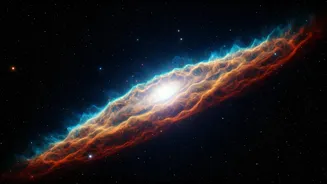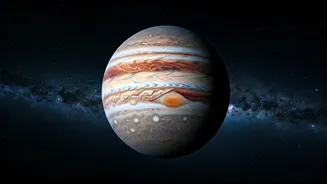Enceladus' Icy Secrets
Saturn's moon Enceladus has long fascinated scientists due to its subsurface ocean and the plumes of water vapor and ice particles that erupt from its south
polar region. These plumes contain organic molecules, the building blocks of life as we know it, which has led to speculation about the moon's potential habitability. The presence of these molecules, however, doesn't automatically mean life exists, but it suggests that the necessary ingredients might be present, making Enceladus a key target in the search for extraterrestrial life. The study of these molecules and the processes that might have led to their formation is a crucial part of astrobiology research.
Cosmic Rays: The Culprit?
A recent study suggests that cosmic rays, high-energy particles originating from outside our solar system, could be responsible for creating the organic molecules found on Enceladus. These rays bombard the moon's icy surface, interacting with the ice and any organic material present. This interaction can trigger chemical reactions, leading to the formation of more complex organic molecules. This provides a mechanism for organic compounds to emerge in the absence of sunlight or other common energy sources used in similar processes here on Earth. The implications suggest this model could be applicable in other icy environments, like those that could be found on Europa or other moons with icy shells.
Tabletop Molecular Technique
MIT Physicists have created an exciting technique which allows them to see inside atoms. While this technique isn't directly related to the Enceladus study, it does highlight the continuous progress made in the scientific community. Advances in understanding the composition and behavior of matter at a fundamental level are relevant across disciplines, as they enable deeper insights into the chemical reactions and processes that could occur within the icy moons. Such developments offer tools and methodologies that could be used in related fields of study.
Implications and Future Research
This discovery offers new insights into how organic molecules can form in environments devoid of direct sunlight, potentially expanding the scope of habitable zones in the universe. Understanding how these molecules originate on Enceladus could help scientists refine their search for life beyond Earth. Future research will likely focus on further analyzing the composition of Enceladus' plumes and using more sophisticated models to simulate the interactions between cosmic rays and the moon's surface. Scientists can use this data to determine the specific organic molecules being produced and whether the environment offers the necessary conditions for life to evolve.














